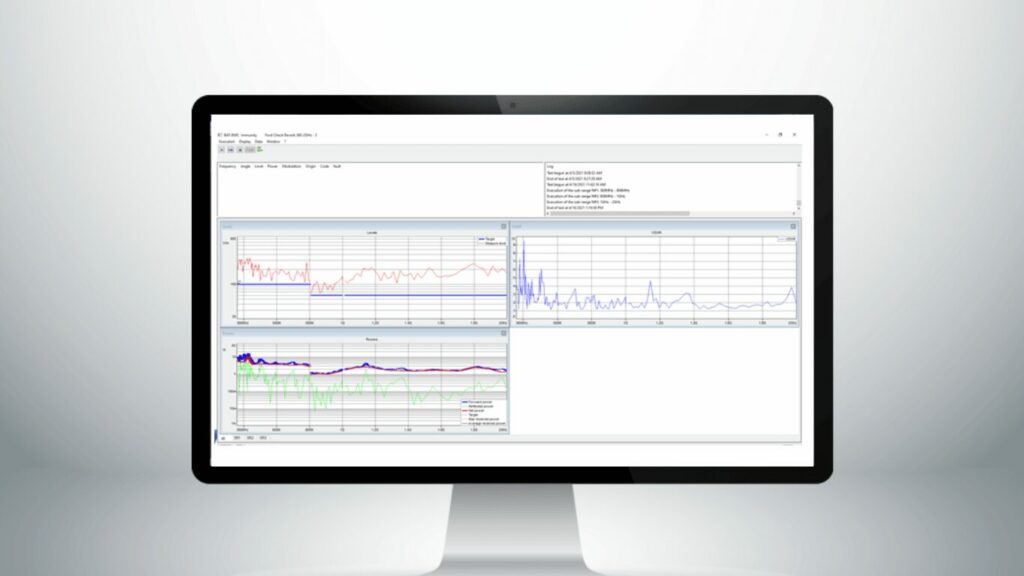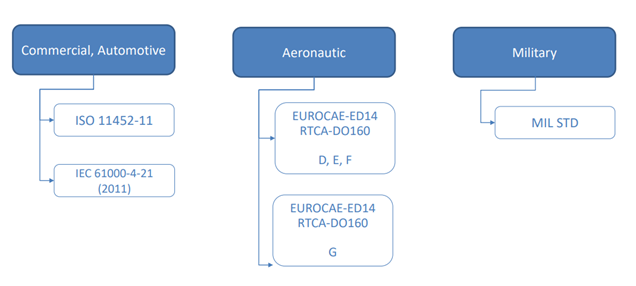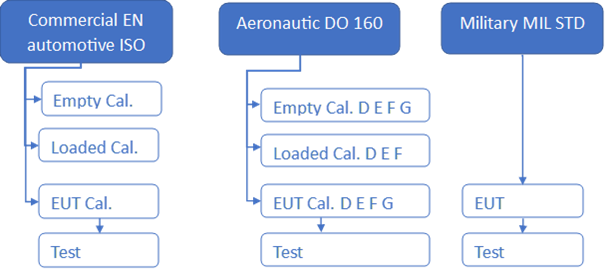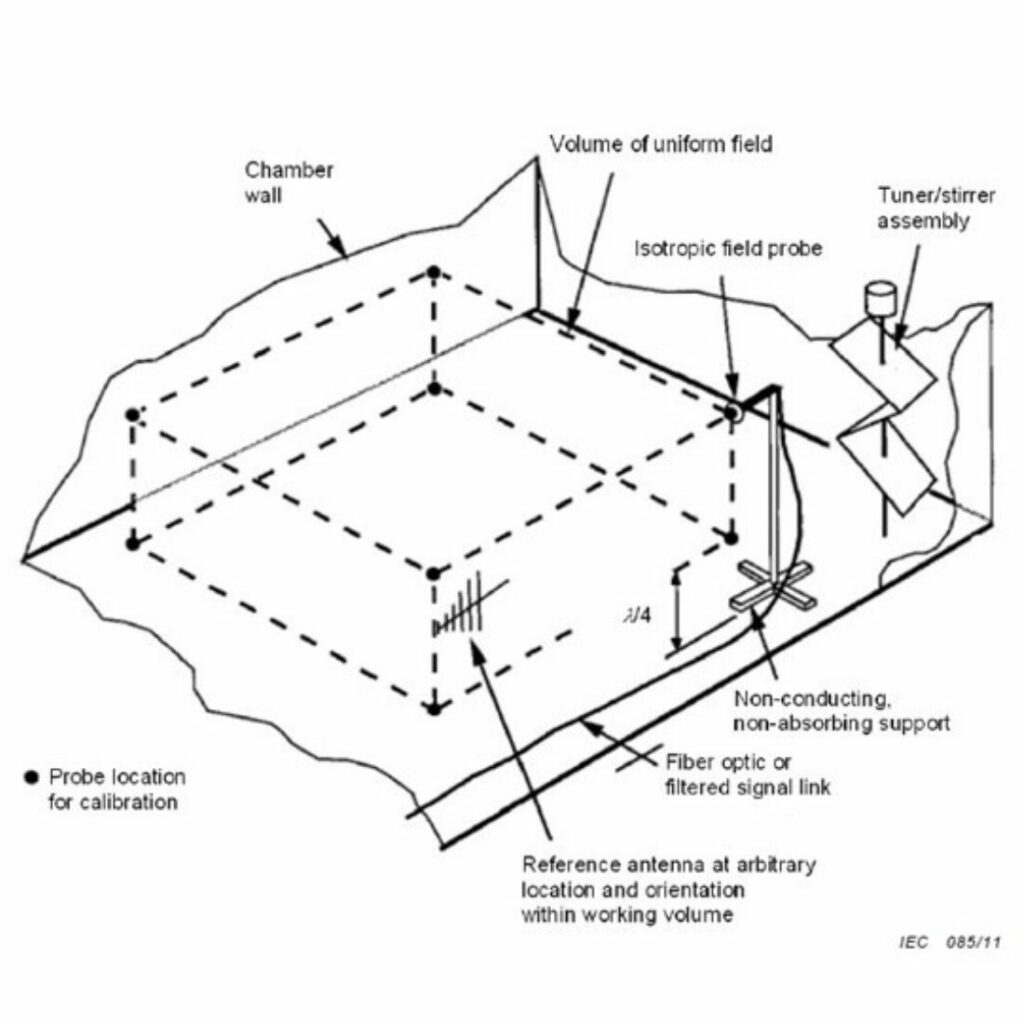Reverb measurement software
Automated Reverberation Chamber Measurements

Reverberation chamber operation
Reverberation chambers have been used for electromagnetic compatibility (EMC) testing for over 20 years.
This highly conductive cavity, excited by RF energy, generates uniform electromagnetic field.
Thanks to the mechanical stirrer, the field is statistically isotropic and randomly polarized, guaranteeing reliable measurements under the conditions defined by standards.
Automating Reverberation Tests: Compliance and Customization with BAT-EMC
BAT-EMC allows you to automate reverberation tests for both immunity and emissions, complying with a wide range of standards such as DO 160, MIL-STD, ISO 11451-5, ISO 11452-11, and EN 61000-4-21. The software enables you to configure all the parameters required by these standards. Although reverberation tests are relatively straightforward, they involve complex statistical calculations that BAT-EMC manages for you, ensuring compliance and enabling customized testing.
Test and calibration
BAT-EMC facilitates immunity testing to ISO 11452-11, EN 61000-4-21, MIL STD, and DO 160 F and G. The software lets you configure the stirrer for continuous or stepwise rotation, defining the number of positions and the required rotation time.
Calibration types
3 types of calibration are required:
Empty calibration
Validates that the field is uniform and isotropic at the lowest usable frequency (LUF). Performed once.
Loaded calibration
Confirm that the field remains uniform and isotropic with a load simulating the maximum load of the Equipment Under Test (EUT), also run once.
Calibration with Equipment (EUT)
Estimate the actual load on the EUT.
These calibrations are optional, depending on standard requirements.


Measurements during Empty Calibration
Two types of measurements are taken during the Empty and Loaded calibration:
E field
Evaluation of the volume of the uniform field zone and the LUF frequency.
Power received on antenna
Field strength/power ratio measurement in the empty chamber.
A third measurement includes direct power and, if necessary, reflected power.

Key BAT-EMC features
BAT-EMC enables you to define key elements for reverberation chamber testing, including:
- Chamber volume
- Efficiency factors for transmitting and receiving antennas
- Homogeneity limit
BAT-EMC exports all measurements and statistics, enabling you to make your own calculations for research and development.
If a standard changes, Nexio integrates the new formula, while giving you the option of creating your own formulas.
To determine the minimum number of stirrer positions, perform a no-load calibration with a large number of positions. BAT-EMC will analyze all measurements to calculate the optimum number to meet uniformity requirements.
Nexio offers a complete package to cover reverberation testing, both for emission and immunity.
Automatic execution: The software automatically executes immunity tests.

Manual mode: The operator can adjust parameters such as :
- Frequency
- Modulation
- Angle
- Generator level

Control tools are also available for monitoring test equipment (MAE).
As with all BAT-EMC tests, you can export results to Excel and generate highly customizable reports in Word.

Advantages of reverberation chamber
EUT in the uniform field area
Immunity tested in all directions, including on cables, for more realistic and reliable results.
Absorbent-free
Reduce installation costs while generating a higher electric field for even more effective testing, thanks to the absence of absorbers.
Excellent field/power efficiency
Benefit from the use of less expensive amplifiers or obtain a higher field strength than in an anechoic chamber.
BAT-EMC & Nexio
With the BAT-EMC maintenance contract, Nexio ensures that your software is always up to date and compatible with the latest standards and drivers.
Testimonial
What our customers say
We'd like to congratulate you on the way you've taken into account our requirements for improved signal display in reverberation measurements.




A reliable, flexible EMC solution
Used by over 100 customers worldwide
With over 100 satisfied customers worldwide, BAT-EMC is the ideal solution to meet your needs for standards, drivers, flexibility and compatibility with all EMC tests.
- Automatic reports: generate clear, comprehensive reports in just a few clicks.
- Easy export: Share your results with your teams with ease.
- Real-time monitoring: Follow your EMC tests live for better management.
BAT-EMC supports you at every stage of your EMC tests, quickly and efficiently.
BAT Webinars replay
Discover all our replay webinars dedicated to the BAT range